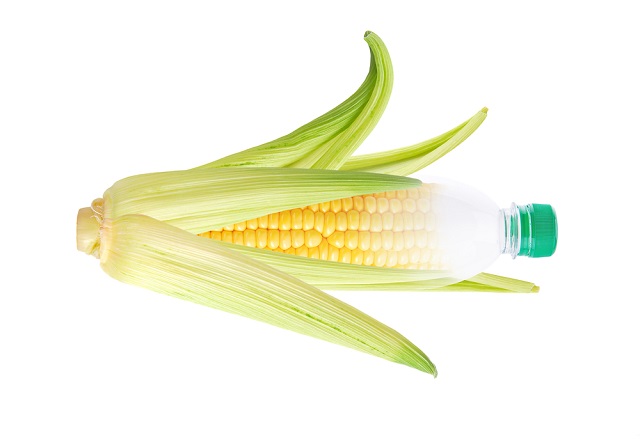
A team of researchers at the KU Leuven Centre for Surface Chemistry and Catalysis has formulated a simple method to produce the bioplastic known as polylactic acid (PLA) in a waste-free manner.
PLA bioplastics are employed in several products used in daily life such as vegetable wrapping foil and biodegradable drinking cups. However, so far, they are not thought of as a 100% alternative to conventional petroleum-based plastics as they cost more to produce.
Basically, PLA bioplastics are obtained from renewable resources such as sugar found in sugarcane and maize. The sugar turns into lactic acid upon fermentation. The lactic acid then acts as a building block for polylactic acid. Over a period of time, exposure to certain environments causes the PLA to degrade. However, this can still be put to use if properly collected and sorted, as this plastic is industrially compostable as well as recyclable. Another key feature of PLA plastics is that they are biocompatible, therefore can be applied in the medical sector to make several products such as absorbable suture threads. These bioplastics can also be adapted for use in 3D printing.
Despite these advantages, PLA is still not being used as an alternative to petroleum-based plastics due to the intermediary steps, which increase the overall production costs.
First, lactic acid is fed into a reactor and converted into a type of pre-plastic under high temperature and in a vacuum. This is an expensive process. The pre-plastic – a low-quality plastic – is then broken down into building blocks for PLA. In other words, you are first producing an inferior plastic before you end up with a high-quality plastic. And even though PLA is considered a green plastic, the various intermediary steps in the production process still require metals and produce waste.
Professor Bert Sels from the Centre for Surface Chemistry and Catalysis
We have applied a petrochemical concept to biomass. We speed up and guide the chemical process in the reactor with a zeolite as a catalyst. Zeolites are porous minerals. By selecting a specific type on the basis of its pore shape, we were able to convert lactic acid directly into the building blocks for PLA without making the larger by-products that do not fit into the zeolite pores. Our new method has several advantages compared to the traditional technique: we produce more PLA with less waste and without using metals. In addition, the production process is cheaper, because we can skip a step.
Postdoctoral Researcher Michiel Dusselier
Going forward Professor Sels believes that the novel technology is very likely to make an impact. “The KU Leuven patent on our discovery was recently sold to a chemical company that intends to apply the production process on an industrial scale. Of course, PLA will never fully replace petroleum-based plastics. For one thing, some objects, such as toilet drain pipes, are not meant to be biodegradable. And it is not our intention to promote disposable plastic. But products made of PLA can now become cheaper and greener. Our method is a great example of how the chemical industry and biotechnology can join forces”.
The team’s research findings were published in Science.
References